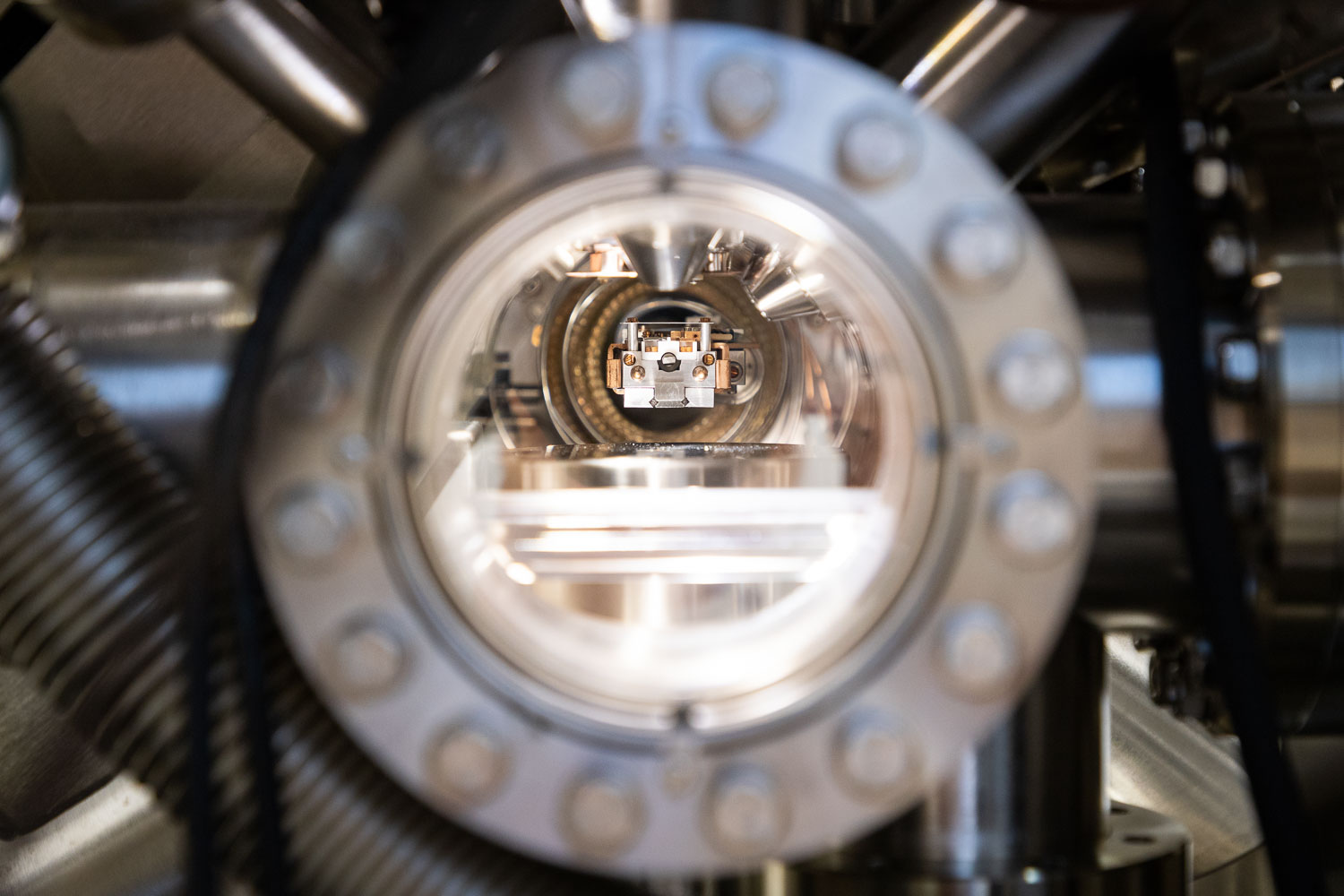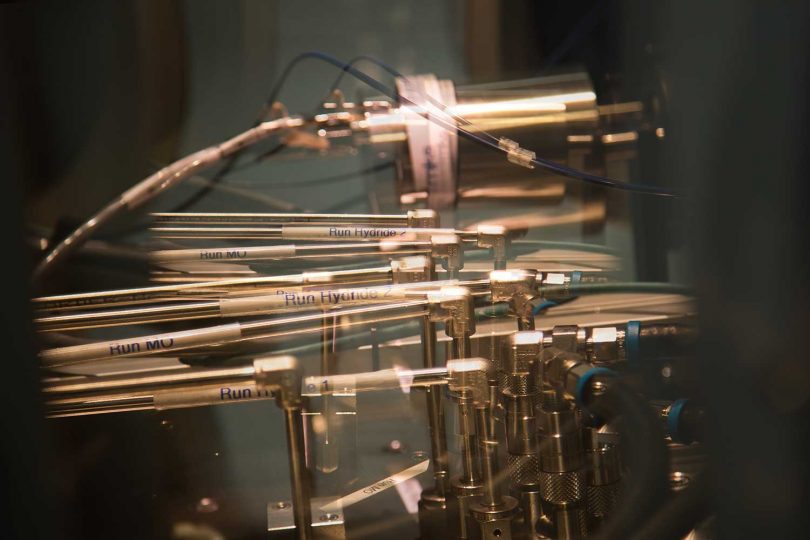Picture of the month: View into the X-ray photoelectron spectrometer From the Laboratory for Emerging Nanometrology (LENA)
Our picture of the month September comes from the new Research Center for Quantum and Nanometrology, “Laboratory for Emerging Nanometrology” (LENA). More precisely, it is a direct view into the sample chamber of one of the large nanoanalytical instruments, the X-ray photoelectron spectrometer (XPS). This is a surface-sensitive technique that allows qualitative and quantitative statements to be made about the chemical elements present on the surface as well as their chemical environment, bonds and oxidation state.

View into the sample chamber of the X-ray photoelectron spectrometer (XPS) in the LENA, which is used for example in biomedical engineering. Picture credits: Markus Hörster/TU Braunschweig
The XPS is used, for example, in biomedical engineering. Within the research group “FOR 2180 Graded Implants”, Sarah Oehmichen from the Institute of Technical Chemistry deals with the surface optimization of polymer-based implants. These are electro-spun fibre mats which have been modified both in a classical chemical way and by plasma treatment. The XPS methodology is used here to prove the success of the respective modification and to better understand and classify results from other investigations, for example from cell tests. This is done with regard to the development of an implant for the tendon-bone transition in the shoulder. Another field of application is battery research, where the analysis of material properties on surfaces and interfaces plays an important role.
Technical details
The new measurement setup in the LENA is equipped in such a way that scientists can reduce the standard information depth of this technique from 10 nm (with monochromatized Al K-alpha at 1486eV) to the outermost 1-3 nm of the sample surface by angle-resolved measurements or increase it to up to 15-20 nm by using a different anode material. With the help of an Arn+ Gas Cluster ion source, depth profiles can be recorded, which then make it possible to look even deeper into the sample. In addition to XPS, other measurement modes such as UPS, ISS, AES, SEM and SAM are also possible.

